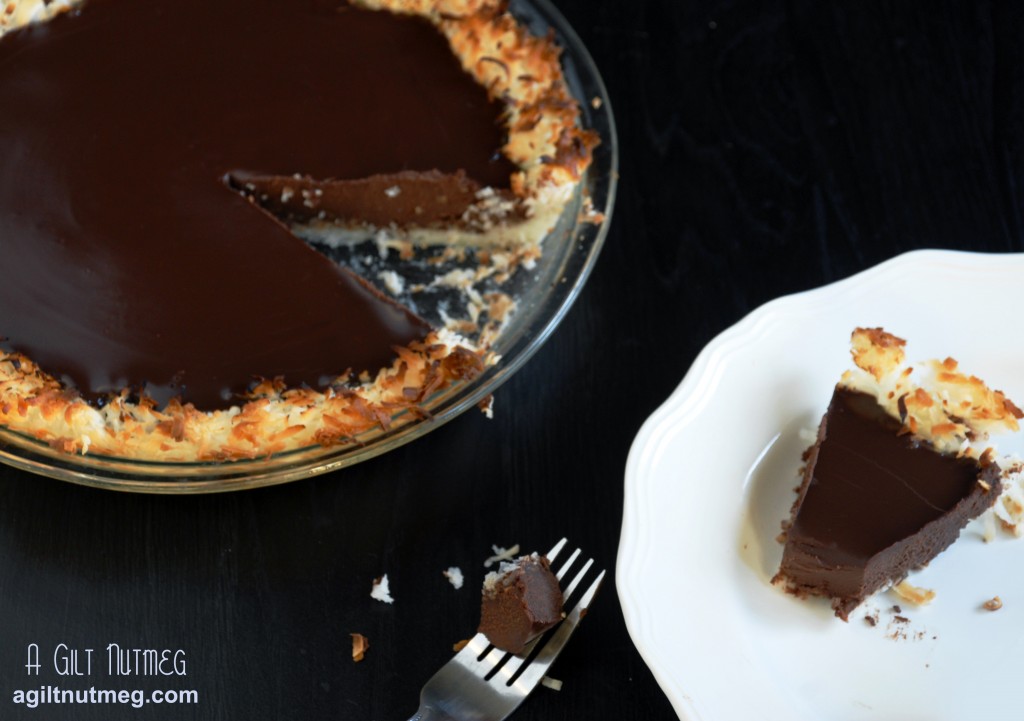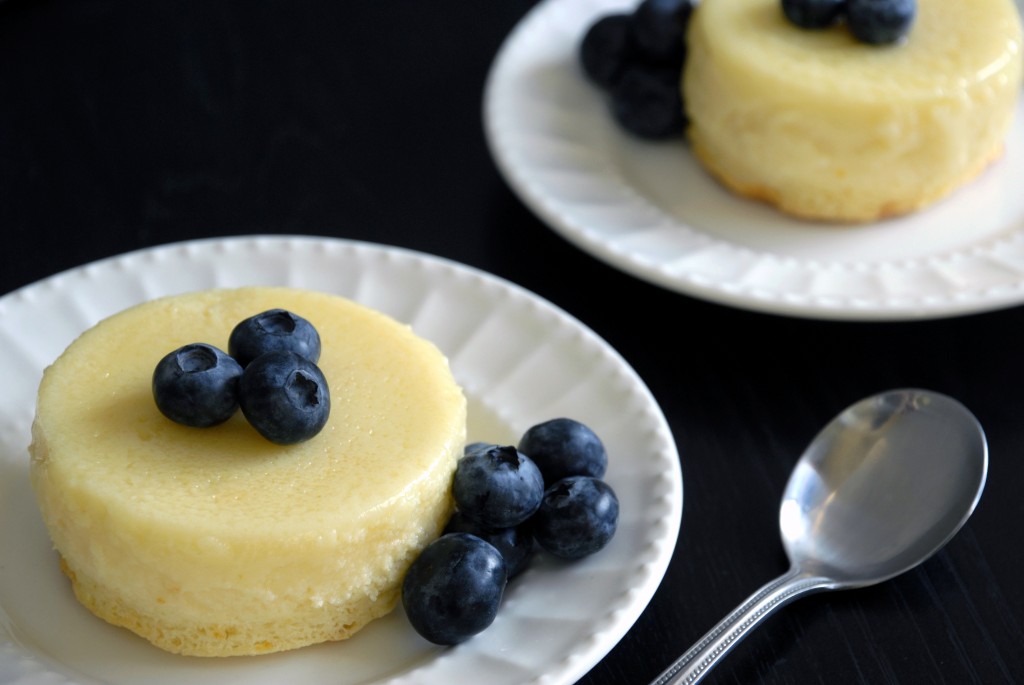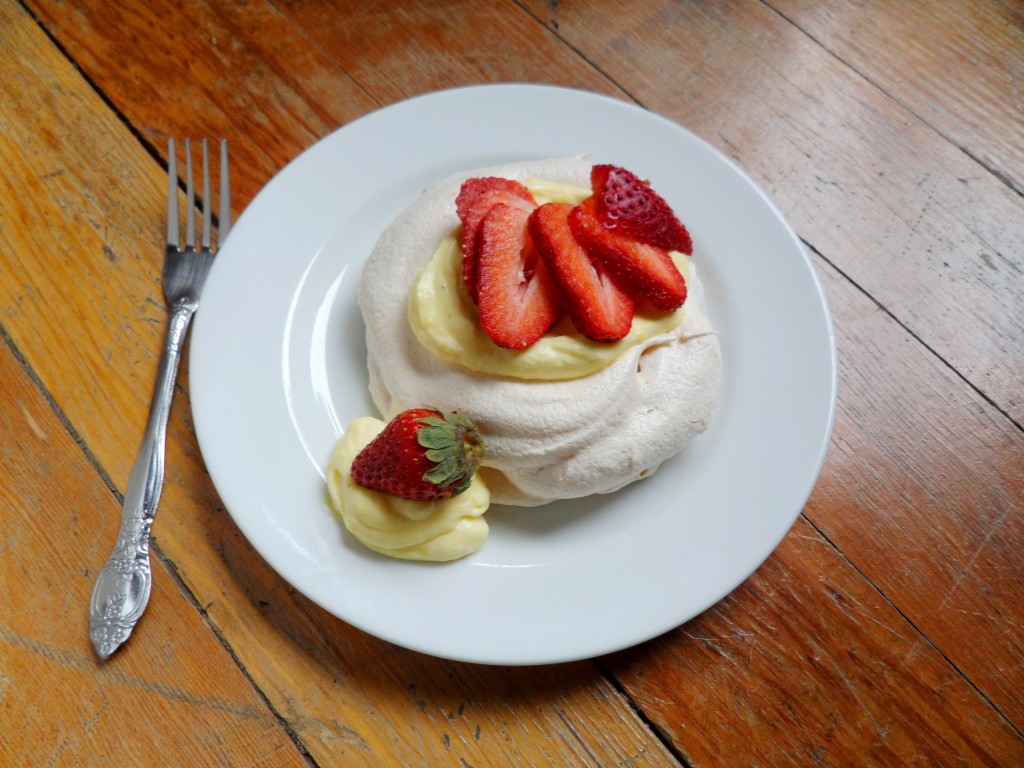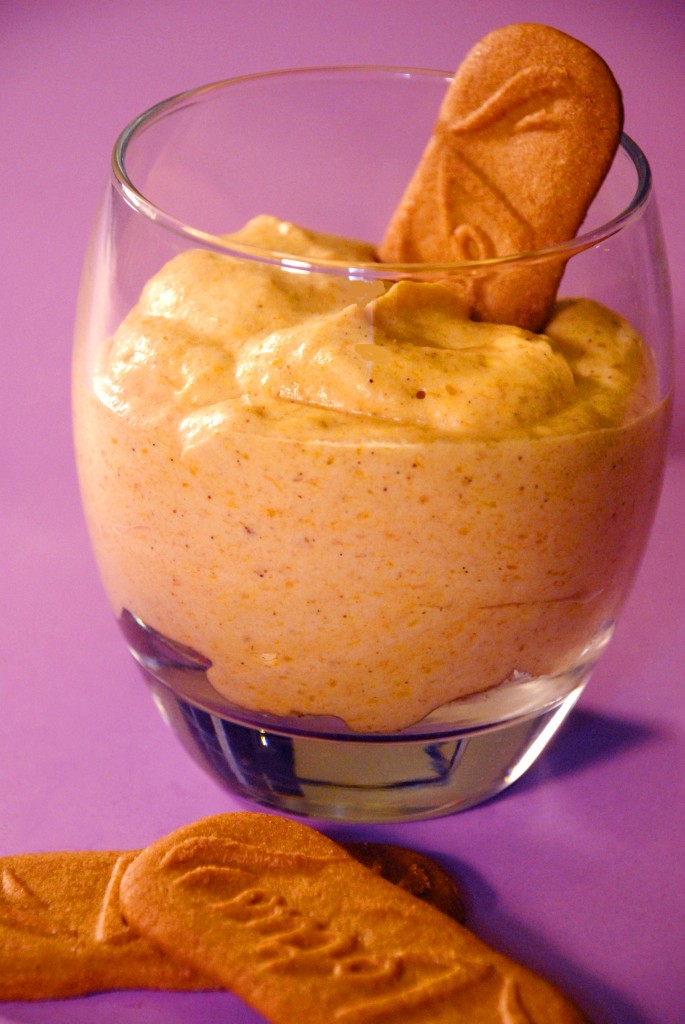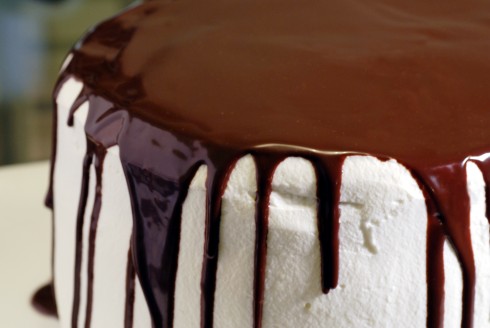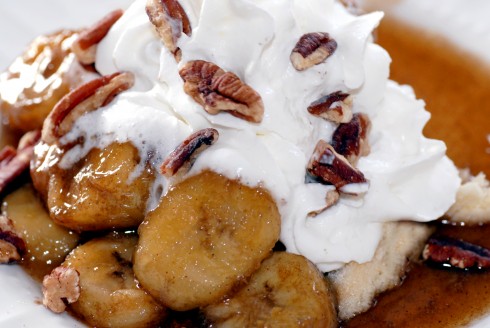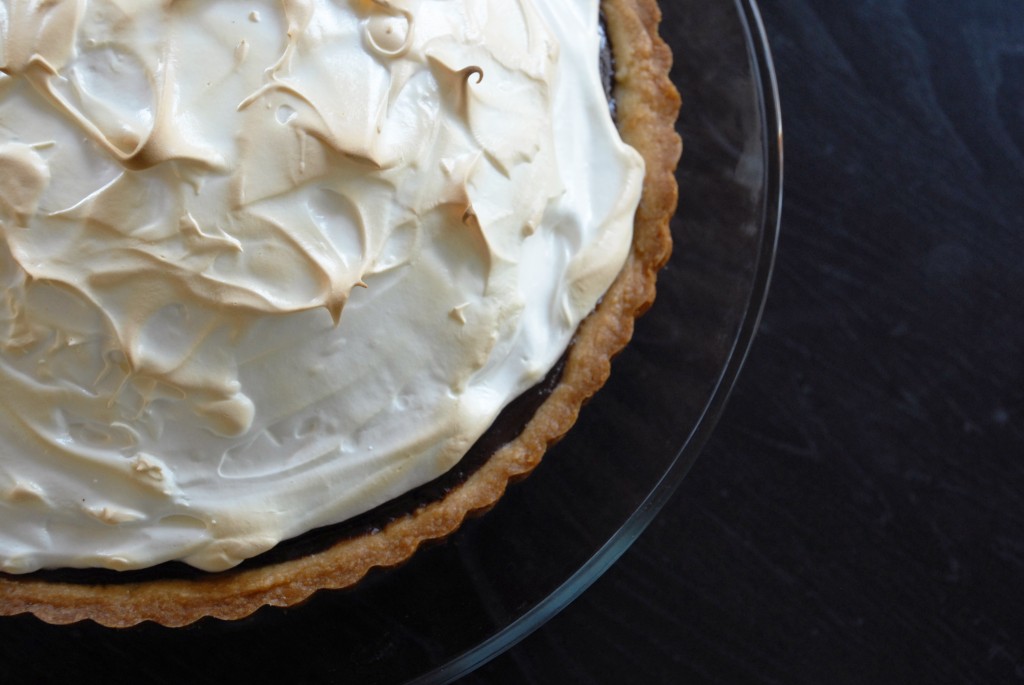
Today’s recipe is another one of those “you shoulda been there” events. I wished I had a sign on my car that said “I’M NOT A BAD DRIVER I’M JUST HOLDING A MELTED TART ON A HEAVY CAKE STAND IN MY LAP”. The story behind this is that my oven doesn’t have a broiler element on top and instead it just heats it up really hot so instead of browning the meringue directly, it heated up the whole tart which meant that the chocolate ganache filling, which was already chilled and set, promptly melted and I had a liquid tart to bring to work. Fortunately, I took pictures for you before leaving for work, but my coworkers will see what you see above, except with chocolate spilled all over the crust (there are a lot of turns and hills on the way to work).
That all said, the tart gave me some dubious moments (the crust dough is super soft, it was my first meringue and it took twice as long to whip than the recipe because I have a handheld mixer instead of a stand mixer, etc) but over all it came together pretty easily and I was only late to work by about 30 minutes (and, of course, no one gets mad at you for being late when you walk into the office carrying a chocolate meringue tart and a big batch of tiramisu).
This was a “Wildcard Week” entry for Project Pastry Queen, so head to this page to see everyone’s different versions of this tart. It was Joelen‘s choice all the way back in August of 2010, just after PPQ was started, so maybe it’ll bring back fond memories to all of the other participants. I’m going to need some sort of video tutorial for you ladies for making the meringue “big hair” style. All I ended up with were a lot of finger-holes in the meringue, so maybe my meringue wasn’t quite stiff enough yet? It turned out nice, regardless, so I won’t complain!
In terms of switching up the recipe (aside from the single big tart vs smaller tarts) I had what I thought were hazelnuts in my kitchen but it turned out to be a package of chestnuts (I’ve never cooked with either) so I had to just rely on the Frangelico for the hazelnut flavor, but I loved Joelen’s idea of adding some to decorate the top of the ganache for some extra crunch. Also, I found out that I don’t actually like cooking with vanilla beans. Maybe it’s because I’m still of the mindset that every eensy little seed is priceless and I felt like I lost too many of the seeds. I also threw in a splash of vanilla extract to pump up the vanilla flavor that I felt was lacking (because if you’ve been following this blog for any amount of time, you know that I can never have enough vanilla flavor!). I think I’m going to stick with vanilla bean paste from here on out…
Chocolate Meringue Tart with Frangelico Crust
From Project Pastry Queen by Rebecca Rather
Note: The original recipe calls for making 4 small tarts. I made one large tart and it turned out beautifully, but I did double the crust recipe so that there was enough to cover the pan-and it just barely was enough. I’ve included the doubled recipe below, but if you’re going to make 4 smaller tarts, you likely won’t need as much crust. Also, as mentioned above, a hand mixer will double the time it takes to whip up the meringue, so do some weight training before hand.
Update: I just checked on my tart in the office fridge-the meringue shrunk! I’d read about this happening but didn’t really think about it this morning. Clearly I should have. One tip I’ve read is that you should “seal” the pie, so that the meringue touches or overlaps the crust. I guess this gives it something to hang on to. As you can see by my picture, I definitely did not do that. Ah well, that’s what this blog is all about-me figuring out fool proof methods for you through trial and error in my own kitchen so you don’t have to!
Crust:
- 2 sticks unsalted butter at room temperature
- 1 cup powdered sugar
- 4 teaspoons Frangelico liqueur
- 1/2 teaspoons salt
- 1 1/2 cups all purpose flour
Ganache:
- 1 cup heavy whipping cream
- 1 tablespoon unsalted butter
- 1/8 teaspoon salt
- 1 vanilla bean, halved lengthwise + 1 teaspoon vanilla extract (or alternatively to the bean and extract, use 1 tablespoon of vanilla bean paste)
- 7 ounces semisweet chocolate, finely chopped
Meringue:
- 4 large egg whites, at room temperature
- 3/4 cup sugar
- Preheat oven to 350 degrees; butter or cooking spray your tart pan
- Cream the butter and sugar in a bowl for 3 minutes, until smooth. Add in the Frangelico and salt, mix thoroughly. Add the flour, 1/4 cup at a time, mixing until ingredients are just incorporated.
- Divide the dough into two balls and tightly wrap them in saran wrap. Let chill in the fridge for 30 minutes (Don’t start your ganache just yet! You want it still warm to pour in the tart shell, so wait until the shell has cooled from the oven.)
- Remove the crust from the fridge and press it into an even layer in your tart pan, making sure it comes all the way to the top of the edges. I used the bottom of a measuring cup to level off the top of the crust so it was nice and smooth, but you can even just use a knife to cut it along the edge.
- Now here’s where I have to tell you something different from what I actually did. I put the shell in the oven and walked away, but when I checked on it, it was super puffy, so I went back and put a piece of tin foil with some pie weights in it to weigh it down a little bit. Next time I would put the weights in from the start. You can use a piece of tin foil and dried rice or beans in place of weights.
- Bake the tart for 10 minutes and then remove the tin foil so it can brown for another 5 minutes or so. Make sure the edges are golden brown before removing it from the oven.
- When it’s done, let it cool for 30 minutes (now you can start the ganache filling).
- In a sauce pan, combine the heavy cream, butter, salt, and vanilla (in whatever form you’re using) and bring to a gentle boil for 5 minutes or so.
- If you are using a vanilla bean, take it out and scrape the seeds out with the tip of your knife and add back into the cream mixture.
- Put the chopped chocolate into a bowl and pour the hot cream mixture over it. Let it stand for a minute or so and whisk until you have smooth creamy chocolate.
- Pour it into the cooled tart shell and put it in the fridge to set up for 30 minutes.
- Set a large pot of water to simmer and clean out a large metal bowl with dish soap. You want any tiny trace of oil (even from your fingers) gone from the bowl. Set the bowl over the pot of simmering water (you’ve just made a home-made double boiler) and add the sugar and egg whites. Whisk constantly until the sugar is completely dissolved.
- Remove the bowl from the double boiler and use your stand mixer on low for 5 minutes before hiking it up to high speed for another 5 minutes. I have a hand held mixer and did it on low for 5 minutes and high for 10 minutes (clearly I didn’t realize it was going to take twice as long or else I would have done the low speed for longer as well). You want the egg whites to be opaque white, stiff peaks and glossy.
- Turn your broiler on to high. Top the tart with the meringue, smoothing it to the edges with a spatula. I used the back of my spatula to make the little peaks in the meringue, repeatedly touching the spatula to the meringue and quickly jerking the spatula up.
- Set the tart in the oven and carefully watch it brown. If you have an oven like mine, your broiler element does not exist, hence my wrenching morning detailed above. I’m also sure that my meringue could be more browned, but I was terrified of burning it and would rather have a less-browned than over-browned meringue!
- Serve the same day that you assemble the tart and enjoy!
